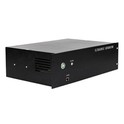Hey there! I'm a supplier of ultrasonic pipe filters, and I often get asked about the power supply requirements for these nifty devices. So, I thought I'd break it down for you in this blog post.
First off, let's talk a bit about what an ultrasonic pipe filter is. It's a key part of an ultrasonic filtration system that helps clean fluids flowing through pipes. You can check out more details about it on our Ultrasonic Pipe Filter page.
The power supply requirement for an ultrasonic pipe filter isn't a one - size - fits - all deal. It depends on several factors. One of the main things is the size of the filter. Larger filters usually need more power to operate effectively. Think of it like a big engine in a large truck; it needs more fuel (or in this case, power) to do its job.
Another factor is the frequency of the ultrasonic waves. Different frequencies are used for different types of filtration tasks. Higher frequencies often require more power. For example, if you're trying to filter out really tiny particles, you might need a higher - frequency ultrasonic wave, and that means more juice from the power supply.
The flow rate of the fluid through the pipe also matters. If you've got a high flow rate, the filter has to work harder to clean all that fluid in a short amount of time. So, it'll need more power to keep up. On the other hand, a lower flow rate might allow for a less - powerful power supply.
Now, let's get into the nitty - gritty of the actual power requirements. Most ultrasonic pipe filters operate on either alternating current (AC) or direct current (DC). AC is more commonly used in industrial settings because it's widely available from the electrical grid. The voltage for AC - powered filters can range from 110V to 480V, depending on the size and specifications of the filter.
DC - powered filters, on the other hand, are often used in more portable or specialized applications. They usually run on lower voltages, like 12V or 24V. These are great for situations where you need to move the filter around or where there's a limited power source.
It's also important to consider the power consumption of the filter. This is measured in watts. A small - scale ultrasonic pipe filter might consume around 50 - 100 watts, while a large industrial one could use several thousand watts. You need to make sure your power supply can handle the continuous power draw of the filter without overloading.
Some ultrasonic pipe filters come with built - in power supplies, which makes things a lot easier. These are pre - configured to provide the right amount of power to the filter. But if you're using an external power supply, you've got to be careful to match it correctly with the filter's requirements.
If you're comparing ultrasonic pipe filters with Ultrasonic Tank Filters, the power supply requirements can be quite different. Tank filters are designed to clean fluids in a static tank, so their power needs are often based on the volume of the tank and the type of contaminants in the fluid. Pipe filters, as we've discussed, are more focused on the flow rate and the size of the pipe.
When setting up your ultrasonic pipe filter, it's always a good idea to consult the manufacturer's specifications. They'll give you the exact power supply requirements for your particular model. And if you're not sure about anything, our team of experts is here to help.


We understand that getting the power supply right is crucial for the proper functioning of your ultrasonic pipe filter. A wrong power supply can lead to inefficient filtration, damage to the filter, or even safety hazards. So, take the time to do your research and make sure everything is set up correctly.
In addition to the basic power requirements, you might also need to consider other electrical factors. For example, the power factor. This is a measure of how effectively the filter uses the electrical power it receives. A low power factor means that the filter is using more power than it actually needs, which can lead to higher energy costs. Some filters are designed to have a high power factor, which is better for both your wallet and the environment.
Another thing to think about is the electrical protection. Your power supply should have features like over - current protection, over - voltage protection, and short - circuit protection. These features help prevent damage to the filter and ensure safe operation.
If you're in the process of installing an ultrasonic pipe filter, it's a good idea to have a professional electrician handle the power supply connection. They have the knowledge and experience to make sure everything is wired correctly and meets all the safety standards.
At the end of the day, having the right power supply for your ultrasonic pipe filter is essential for getting the best performance out of it. Whether you're using it in a small workshop or a large industrial facility, making the right choice can save you time, money, and headaches in the long run.
If you're interested in learning more about our ultrasonic pipe filters or have any questions about power supply requirements, don't hesitate to reach out. We're here to help you find the perfect solution for your filtration needs. Whether you're a first - time buyer or looking to upgrade your existing system, we've got the expertise and the products to meet your requirements. Let's start a conversation about how we can work together to get your filtration system up and running smoothly.
References
- General knowledge about ultrasonic filtration systems and electrical engineering principles.





